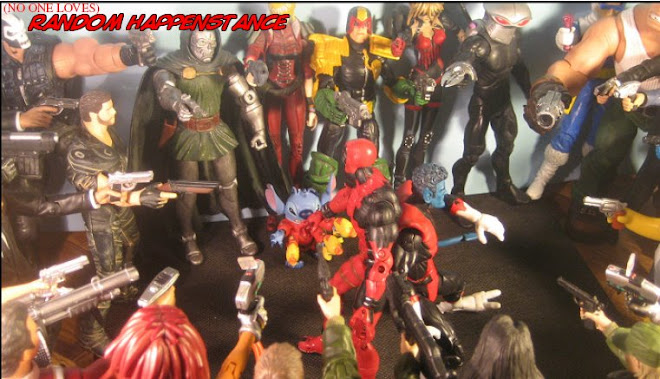
First up, Star Trek #18, which I know I had as a kid. Marvel was chasing that Star Wars money--not unlike Paramount in that matter--but never seemed to hit their stride on this one. Maybe the start point, the somewhat bland Star Trek: the Motion Picture, was to blame, since Marvel began with a three issue adaptation of that; and the somewhat off-model Star Trek #5 is one of the only others that stuck in memory. This issue, a robot caretaker of a massive ship abducts Kirk and Spock, and tells them, without malice, one of them is going to die. They are then placed in a not particularly accurate simulation of a pirate raid, and Kirk is killed, sacrificing himself to save Spock. The robot tells Spock he can revive the captain, and does; then puts them in a logic-trap drawn from Spock's mind, where Spock is killed saving Kirk. After Spock is brought back, the robot tells them now one will have to sacrifice themselves to save the Enterprise: Spock tries to take the decision out of his captain's hands by giving him the nerve pinch, but Kirk gives a mighty effort to fight through it.

The robot then explains, it was created to watch over a race that had almost destroyed itself, by being selfish pricks: billions had died, since as a whole they had been completely self-centered. It needed Kirk and Spock's example, to introduce the concept of selflessness to them, and now could. The robot never had any intention of hurting any of them, but couldn't tell them, since it needed their reactions to be real. The Enterprise is free to go on, with "the human adventure--is just beginning!" Maybe not a great sentiment for a last issue; DC would take the Star Trek license in 1984, after the far stronger Wrath of Khan. That would be a much more dramatic start point, even if the continuity would be a bit iffy.

Technically, this next issue may have been the latter published, but the series had run longer: Star Trek: the Next Generation #80. This was the conclusion of a two-part story, but also tied into an earlier three-parter, in which Picard's seemingly harmless words of encouragement to Worf--to the effect of, "I wish I had an entire crew just like you"--is put to the test by Q, who turned the entire crew of the Enterprise into Klingons! Here was another variation on that theme: Q turns the crew into androids like Data this time. Just as the all-Klingon crew had taken some of the worst of those traits, the android crew have all of Data's abilities but none of his socialization, drive to improve, or empathy. (Picard perhaps should be colored as an android on the cover this issue; but I wonder if he wasn't since it was the last.)

When a colony is infected with a lethal virus, android Dr. Crusher's bedside manner is pretty much just a shrugged, 'enh, everyone dies sometime.' Troi finds it hard to counsel anyone without her own emotions, and the rest of the crew are unimaginative sticklers for rules. Q changes them back after they muddle through their mission, but Data points out Q's vision of androids was two-dimensional, at best.

I'm not sure I had this issue when it came out, but I had been reading DC's Next Generation comic here and there for most of it's run; and I like artist Gordon Purcell, who did a ton of Trek books. He had also done at least a few issues of Malibu's Deep Space Nine comic. (For whatever reason, although DC had the original series and Next Generation licenses, Malibu got DS9. They would have a crossover miniseries between them, though.) That series would end here, about a month after DC's books, since Marvel was taking back the license, for about a year and a half, around the same time Marvel was going bankrupt. In this issue, "Turn of the Tide," Major Kira and Gul Dukat are presumed dead, killed when their ship's warp coil ruptured while they were on their way back from mining talks. (I'm not sure why they would've been on the same ship; but this may have been before Dukat really went bad.) O'Brien suspects something, but can't put his finger on it; and Sisko can't spare the time to investigate since a Federation meeting was beginning soon.

Kira and Dukat had survived, and are forced to work together, which is a lot harder on her: she'd almost rather die, while Dukat is probably relishing the chance to show off. Still, they do have to work together, against a militaristic band of Cardassian war criminals--and for them to consider someone a war criminal, they must have been really bad. They've put together a weapon to destroy Deep Space 9, the wormhole, and Bajor; and leave Kira and Dukat onboard to die; so of course they get free and rig it to go off early; while O'Brien and Odo beam them out in the last second. Still, Kira is by no means ready to accept the unctuous bastard Dukat as a friend; later episodes of the show would reveal Dukat's relationship with her mother, which retroactively makes his attentions here all the more horrible.
Along with these issues, looking at the directory for that DVD-ROM, I had maybe half of them already? Well, it still saves me a lot of digging. It would feel weird, for me anyway, to blog something from a scan, though.















































